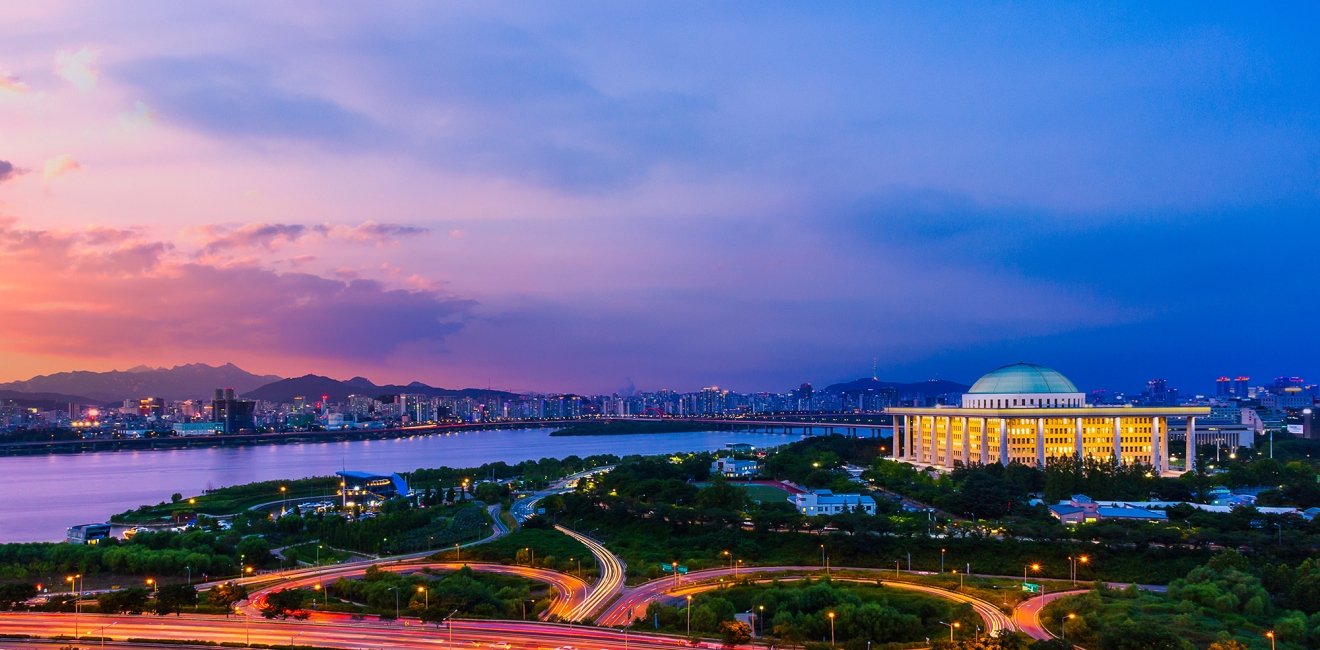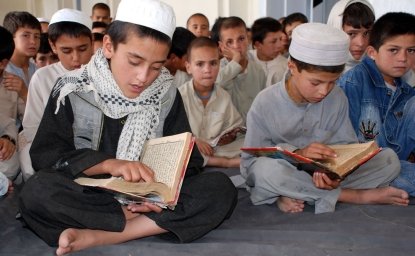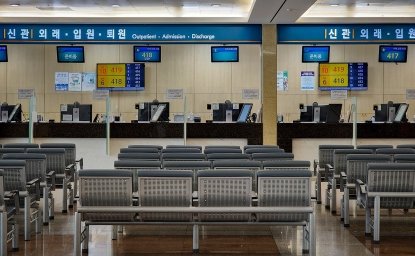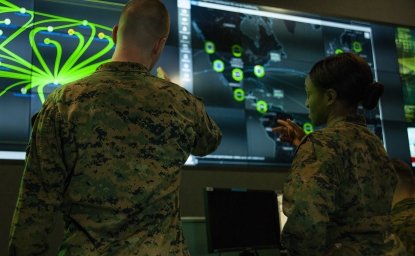
A blog of the Indo-Pacific Program
Last month, President Biden met with South Korea’s President Moon — only his second in-person summit with a foreign leader. The Biden administration comes into office with a clear set of priorities that include rebuilding U.S. alliances and security partnerships, particularly in Asia, and rejuvenating the international liberal order more broadly. South Korea sits at the center of both of those efforts. It was no accident that President Moon was one of the first two foreign leaders to be invited to the White House.
Inevitably, the lead item on the agenda was the threat posed by North Korea’s nuclear/missile programs. No one wanted to say it outright, but the prospect of any progress on North Korea was essentially zero. This meeting took place against the background of four years of highly personalized interaction between President Trump and, Kim Jong Un. The tangible result of two U.S.-North Korean (and three inter-Korean) summits was — nothing. In fact, the North Korean nuclear arsenal doubled in size during those four years.
Biden and Moon pledged to keep working toward some sort of diplomatic breakthrough with the North. Yet it’s unlikely that there will be any significant development to make that happen. The reason is simple; Pyongyang has decided that its nuclear and missile programs are vital national assets and it simply won’t give them up. U.S. strategy now amounts to watching and waiting as the already dire economic circumstances in North Korea deteriorate still further. Maybe, at some point, the situation will become so desperate that Kim’s calculation will change. Meanwhile, the threat posed by North Korean ICBMs will be managed with increasingly sophisticated American anti-missile capabilities — and Kim’s knowledge that an actual attack on the United States would result in the obliteration of North Korea. The latter constitutes a deterrence strategy familiar to any student of the Cold War.
The real agenda at the recent summit involved U.S.-South Korean relations. The staff work that preceded the meeting had obviously been thorough and the results were impressive. The United States pledged to assist South Korea’s COVID inoculation program — including vaccinations for 550,000 Korean soldiers working closely with U.S. forces in Korea. For its part, Seoul produced a commitment by major Korean technology firms to invest up to $40 billion in hi-tech manufacturing in the United States — including a $17 billion Samsung semiconductor plant, and a pledge by the SK Group to build two battery plants plus a $5.3 billion investment in a battery factory to be constructed jointly with Ford. This dovetails with the White House pledge to bring key manufacturing jobs back to the United States and away from China.
Finally, in a gesture of potential strategic significance, Seoul will become increasingly engaged with the existing Quad countries consisting of the United States, Japan, Australia and India) in security cooperation in Asia.
The administration also lifted existing restrictions on South Korea’s missile programs and set the stage for close technical cooperation between Seoul and Washington regarding the next generation of medium-range missiles. Not surprisingly, this produced a high-decibel condemnation from Pyongyang. A sophisticated South Korean missile capability will provide its own deterrence. Seoul and Washington also agreed that South Korea would become a partner with NASA in future space programs. Finally, in a gesture of potential strategic significance, Seoul will become increasingly engaged with the existing Quad countries consisting of the United States, Japan, Australia and India) in security cooperation in Asia. Korean strategists have long aspired to join the United States in an active security role in Asia, beyond the Korean peninsula. [It is worth noting that Britain, host of the forthcoming meeting of the G-7 countries, has invited Seoul to attend.]
Besides the substantive achievements of the Biden-Moon summit, the meetings were notable for the easy cordiality evinced by the two leaders. The time allotted to discussions (conducted in English) was greatly exceeded — not because of problems, but because the two men enjoyed each other’s company. In a notable gesture, President Moon attended a Medal of Honor ceremony for a 94 year-old GI veteran of the Korean War — as well as the dedication of a wall at the Korean War Memorial listing both American and Korean war dead.
The bond forged in countless interactions between soldiers of both countries, the presence of tens of thousands of Korean students in the United States, and the increasing collaboration between United States and Korean corporations is something beyond the usual.
All this signals something else — something involving the very identity of South Korea. The bond forged in countless interactions between soldiers of both countries, the presence of tens of thousands of Korean students in the United States, and the increasing collaboration between United States and Korean corporations is something beyond the usual. Korea is an East Asian country with a culture rooted in China. That culture, deep and rich as it is, has no history of political democracy. That is a Greek invention, adopted and developed by the West. South Korea’s early postwar governments were hard authoritarian in the Asian (and Korean) tradition. But in 1987 Korea’s strongman dictator, declared that the Republic would adopt a democratic political system — and he meant it. This produced a dramatic political transformation with no precedent in Korean history. Remarkably, it worked. Democracy took hold, became rooted, and is, by any measure, a vibrant success today. Interestingly, the largest religious affiliation in Korea has long been Christianity. And lest we forget, the Republic of Korea is a treaty ally of the United States that currently hosts 38,000 US military personnel.
At the same time, China remains Korea’s next door neighbor and its most important trading partner. China is a fault line in Korean politics. Moon’s political constituency is fearful that ties with the United States may become overtly anti-China. South Korean conservatives are more relaxed about that prospect.
Meanwhile, the Biden administration has adopted a fundamental strategy that focuses on Asia — and is deeply dependent on nurturing stronger ties with security allies and partners in the region. It all adds up to an interesting and complex dynamic between Washington and Seoul. At a minimum, South Korea seems certain to occupy a growing role in American thinking and policy.
Follow the Asia Program on Twitter @AsiaProgram. or join us on Facebook.
Follow the Korea Center on Twitter @Korea_Center or on Instagram at @wilsoncenterkorea.
The views expressed are the author's alone, and do not represent the views of the U.S. Government or the Wilson Center. Copyright 2020, Asia Program. All rights reserved.
Author

Adjunct Professor, Johns Hopkins University; Former Professor of National Security Policy, National War College and Deputy Staff Director, Senate Select Committee on Intelligence

Indo-Pacific Program
The Indo-Pacific Program promotes policy debate and intellectual discussions on US interests in the Asia-Pacific as well as political, economic, security, and social issues relating to the world’s most populous and economically dynamic region. Read more


Hyundai Motor-Korea Foundation Center for Korean History and Public Policy
The Center for Korean History and Public Policy was established in 2015 with the generous support of the Hyundai Motor Company and the Korea Foundation to provide a coherent, long-term platform for improving historical understanding of Korea and informing the public policy debate on the Korean peninsula in the United States and beyond. Read more





